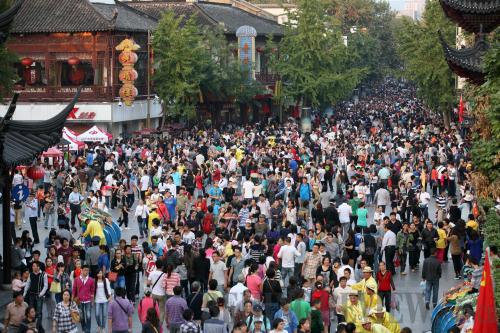|
Practical move
 |
|
HOT TOURISM: Tourists visit the Confucius Temple in Nanjing, capital of east China's Jiangsu Province, on October 1. The country's top 119 scenic spots received a total of 34.25 million visitors during the eight-day holiday, up 20.96 percent from the same period last year (XINHUA) |
Ye Weimin, General Manager of Xinkanghui Travel Agency in Anhui, said, "While traveling, traffic creates the most carbon emissions."
For every 100 km, a traveler produces 29.7 kg of carbon dioxide driving solo by car. On a plane—with hundreds of passengers—that amount is reduced to 13 kg per person and is further reduced to 1.1 kg per person by train, according to Ye.
Ye suggested travelers make more use of public transportation to reduce their carbon footprint. Ye also suggested tourists carry their own washing tools, take a shower in under five minutes and take the stairs when possible.
"China should erect policies to encourage the development of low-carbon products in order to make tourists change their traditional travel and consumption habits," said Sheng Xuefeng.
More Chinese people today are becoming familiar with the notion of low-carbon tourism, and some are even putting it into practice.
"It's easy to bring a handkerchief and a tooth brush when traveling and to use as little facial tissue as possible," said Ms. Zhang.
Bicycle clubs have emerged in east China's Guangdong Province. They often organize bike tours in the cities of Zhuhai, Jiangmen and Dongguan, with club members in the age range of 20 to 40, according to Nanfang Daily.
Nonetheless, low-carbon travel remains far from popular. "Although we advocate low-carbon travel, the market has yet to fully embrace it," said Director Luo of the Feiyang Travel Agency in Zhongshan City, Guangdong, adding that traditional forms of travel still reap more profits.
Car sharing
With rising living standards, many Chinese own a car or two and use their vehicles for travel. As driving solo is not a good low-carbon practice, many choose to car pool.
Miss Wu planed to invite several close friends on a road trip. "We can take turns driving and stop wherever we like," Wu told Nanfang Daily. | 